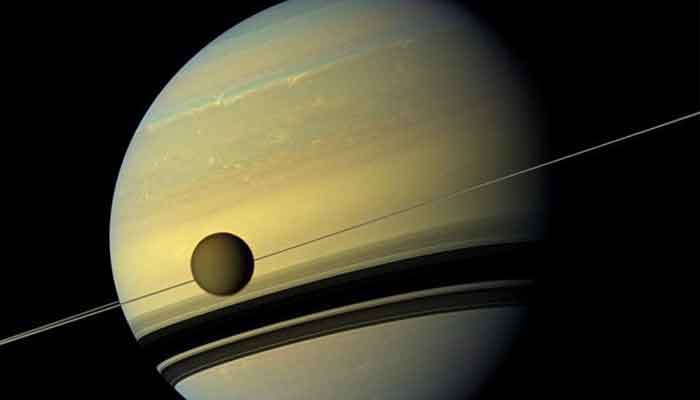Scientists have known for some time that Titan, Saturn’s largest moon, possesses rivers and seas composed of liquid methane on its surface. However, a new study highlighted by Live Science suggests a peculiar absence of deltas on this unique celestial body.
On Earth, large rivers create deltas – sediment-rich wetlands – where the river’s mouth empties into another body of water. Titan stands out as the only planetary body in our solar system, besides Earth, with liquid flowing across its surface.
Researchers recently conducted a search for deltas on this significant Saturnian satellite but found none. “We take it for granted that if you have rivers and sediments, you get deltas,” stated study leader Sam Birch. He further commented, “But Titan is weird. It’s a playground for studying processes we thought we understood.”
Given that deltas are landforms characterized by substantial sediment accumulation, the researchers had hoped to identify them on Titan. Deltas serve as collection points for sediment originating from a broad area. Investigating such silt could yield valuable insights into Titan’s tectonic history and temperature, and potentially even reveal evidence of extraterrestrial life. “It’s kind of disappointing as a geomorphologist, because deltas should preserve so much of Titan’s history,” Birch noted.
Our understanding of Titan’s liquid methane surface comes from NASA’s Cassini spacecraft, which detected evidence of this substance during numerous flybys. During these close encounters, Cassini utilized synthetic aperture radar (SAR) to penetrate Titan’s dense atmosphere, revealing extensive flat regions and channels consistent with large liquid bodies.
However, Cassini’s SAR data indicates that the shallow liquid methane is largely transparent. The difficulty in distinguishing between the sea floor and the coastline has made it challenging for scientists to analyze Titan’s coastal features.
To simulate what Cassini’s SAR would observe when viewing Earth, Birch’s team developed a computer model. This model, however, substituted Titan’s liquid methane for the water found in Earth’s rivers and oceans. “We basically made synthetic SAR images of Earth that assume properties of Titan’s liquid instead of Earth’s,” Birch explained. “Once we see SAR images of a landscape we know very well, we can go back to Titan and understand a bit better what we’re looking at.”



